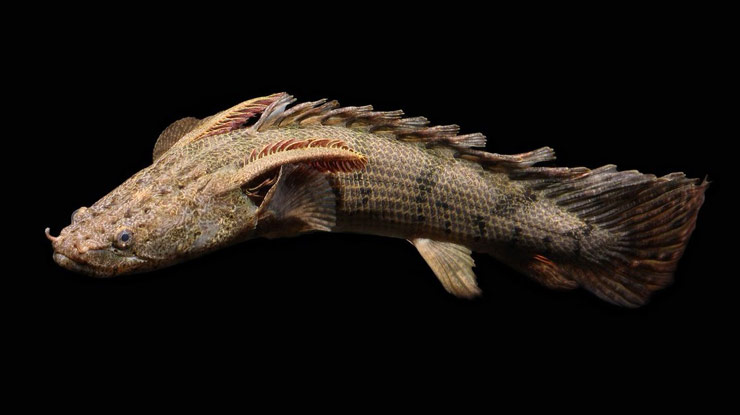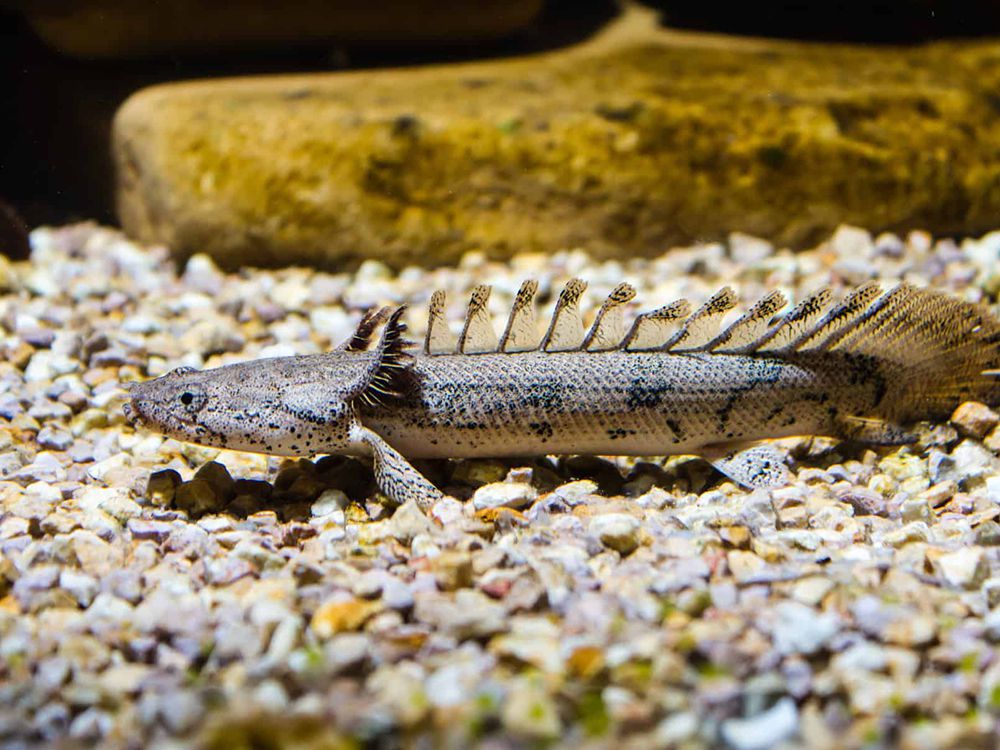Palmas fish, also known as cichlids, are among the most popular freshwater fish species in the world of aquarium enthusiasts. Renowned for their vibrant colors, intricate patterns, and unique behaviors, Palmas fish have captured the hearts of hobbyists worldwide. However, the origin of Palmas fish extends beyond the confines of modern aquariums, tracing back through a rich history of evolution and development in the aquatic world. In this article, we embark on an exploration of Palmas fish, delving into their origins, characteristics, and significance in both natural and captive environments.

Understanding the Cichlidae Family
Contents
- 0.1 Understanding the Cichlidae Family
- 0.2 Diversity and Distribution
- 0.3 Evolutionary Origins
- 0.4 Role in Ecosystems
- 0.5 Cultural Significance
- 0.6 Conclusion
- 1 Pros and Cons of Palmas Fish: Considerations for Aquarium Enthusiasts
- 2 Unveiling the Origins of Palmas Fish: Tracing Their Evolutionary Journey
- 3 Author
Palmas fish belong to the Cichlidae family, a highly diverse group of freshwater fish that are widely distributed across the globe. This family comprises hundreds of different species, each with its own distinct characteristics and behaviors. While the majority of Cichlidae species originate from South America and Africa, some species can also be found in Asia and Madagascar.
Diversity and Distribution
Palmas fish exhibit remarkable diversity in terms of body shape, coloration, and behavior. They inhabit various freshwater habitats, including rivers, lakes, swamps, and ponds, across different parts of the world. Some species of Palmas fish, such as the Oscar fish (Astronotus ocellatus) and the Ram cichlid (Mikrogeophagus ramirezi), have become iconic figures in the aquarium world due to their beauty and uniqueness.
Evolutionary Origins
The origins of Palmas fish can be traced zeusslot back millions of years, as they evolved from common ancestors alongside other fish species. Fossil evidence indicates that fish within the Cichlidae family have existed since the Mesozoic era, meaning they have inhabited the Earth for millions of years.
Role in Ecosystems
In the wild, Palmas fish play a vital role in maintaining the balance of freshwater ecosystems. As predators and scavengers, they help control the populations of other aquatic organisms, such as insects and larvae, while also contributing to the health of aquatic environments by consuming organic debris and other organic matter.
Cultural Significance
Beyond their biological significance, Palmas fish also hold cultural meaning and value for communities around the world. Some species of Palmas fish are integral to local beliefs and traditions, while others serve as sources of food and livelihoods for fishing communities and farmers.
Conclusion
The world of Palmas fish offers a captivating glimpse into the diversity of aquatic life and its relationship with humanity. With a deeper understanding of their evolutionary history, ecological roles, and cultural significance, we can better appreciate the beauty and uniqueness of Palmas fish and play a more active role in conserving and preserving their natural habitats.
Pros and Cons of Palmas Fish: Considerations for Aquarium Enthusiasts
Palmas fish, also known as cichlids, are renowned for their vibrant colors, dynamic behaviors, and captivating presence in freshwater aquariums. As popular choices among hobbyists, these fish offer a range of benefits and challenges for those looking to add them to their aquatic collections. In this article, we’ll explore the pros and cons of Palmas fish, providing insights for aquarium enthusiasts to consider before bringing these fascinating creatures into their homes.

Pros:
- Visual Appeal: One of the primary advantages of Palmas fish is their stunning visual appeal. With a diverse array of colors, patterns, and fin shapes, these fish can create a visually striking display in any aquarium.
- Active Behavior: Palmas fish are known for their lively and active behavior, making them engaging to watch as they swim, explore, and interact with their environment. Their energetic nature adds vibrancy and excitement to the aquarium setting.
- Variety of Species: The cichlid family encompasses a wide variety of species, offering hobbyists numerous options to choose from. Whether you prefer large, showy fish like Oscars or smaller, more colorful varieties like Rams, there’s a Palmas fish to suit every preference.
- Hardiness: Many Palmas fish species are known for their hardiness and adaptability to a range of water conditions. This resilience makes them suitable for both beginner and experienced aquarium enthusiasts alike.
Cons:
- Aggression: Some Palmas fish species can exhibit aggressive behavior, especially during breeding or territorial disputes. This aggression can lead to conflicts with other fish in the aquarium and may require careful management to prevent injuries or stress.
- Size: Certain species of Palmas fish have the potential to grow quite large, requiring spacious aquariums to accommodate their needs. Hobbyists with limited space may find it challenging to provide adequate housing for these larger fish.
- High Maintenance Requirements: While Palmas fish are generally hardy, they have specific care requirements that must be met to ensure their health and well-being. This includes maintaining water quality, providing a varied diet, and monitoring for signs of disease or illness.
- Availability: Depending on your location and access to specialty aquarium stores, certain species of Palmas fish may be more challenging to find than others. Limited availability can restrict your options and may require additional effort to source desired specimens.
Conclusion:
Palmas fish offer a host of benefits for aquarium enthusiasts, including their visual appeal, active behavior, and variety of species. However, it’s essential to consider potential challenges such as aggression, size, maintenance requirements, and availability before adding these fish to your aquarium. By weighing the pros and cons carefully, hobbyists can make informed decisions to create thriving aquatic environments for their Palmas fish and other tank inhabitants.
Unveiling the Origins of Palmas Fish: Tracing Their Evolutionary Journey
Palmas fish, also commonly known as cichlids, have long been admired for their vibrant colors, unique behaviors, and captivating presence in freshwater aquariums. However, their history extends far beyond the glass confines of modern tanks, delving into a rich tapestry of evolutionary development in the aquatic world. In this article, we’ll embark on a journey to uncover the origins of Palmas fish, tracing their evolutionary roots and exploring their significance in both natural ecosystems and human culture.
Understanding the Cichlidae Family
Palmas belong to the Cichlidae family, a diverse group of freshwater fish found in various regions around the world. This family comprises hundreds of species, each with its own distinct characteristics and adaptations. While many species are native to South America and Africa, cichlids can also be found in other parts of the world, including Asia and Madagascar.
Evolutionary History
The evolutionary history of Palmas stretches back millions of years, with evidence suggesting that they originated during the early Cenozoic era. Fossil records indicate that cichlids have existed since the late Jurassic period, evolving alongside other aquatic organisms in response to changing environmental conditions.
Adaptations to Diverse Habitats
Palmas fish have adapted to a wide range of freshwater habitats, including rivers, lakes, streams, and ponds. Their ability to thrive in diverse environments has allowed them to spread and diversify across different regions of the world. From the fast-flowing waters of South American rivers to the tranquil lakes of Africa, cichlids have carved out niches in a variety of ecosystems.
Ecological Significance
In their natural habitats, Palmas fish play vital roles in freshwater ecosystems. As predators, they help regulate the populations of smaller organisms, such as insects and small fish, contributing to the balance of aquatic food webs. Additionally, cichlids serve as indicators of environmental health, with their presence and abundance reflecting the overall condition of their habitats.
Cultural Importance
Beyond their ecological significance, Palmas fish hold cultural importance for many societies around the world. In regions where they are native, cichlids may feature prominently in local folklore, traditions, and cuisine. Some species are revered as symbols of prosperity, fertility, or spiritual significance, while others are valued for their economic importance as food sources or trade commodities.
Conservation Challenges
Despite their resilience and adaptability, Palmas face numerous threats in the wild, including habitat loss, pollution, overfishing, and invasive species. Conservation efforts are underway to protect vulnerable cichlid populations and preserve their natural habitats for future generations to enjoy.
Conclusion
The origins of Palmas fish offer a fascinating glimpse into the complex interplay of evolution, ecology, and human culture. By understanding their evolutionary history and ecological significance, we can appreciate the beauty and diversity of cichlids and work to conserve their natural habitats for generations to come.
Read More Article About “Bitcoin Price Forecast: Predictions and Projections Future“

